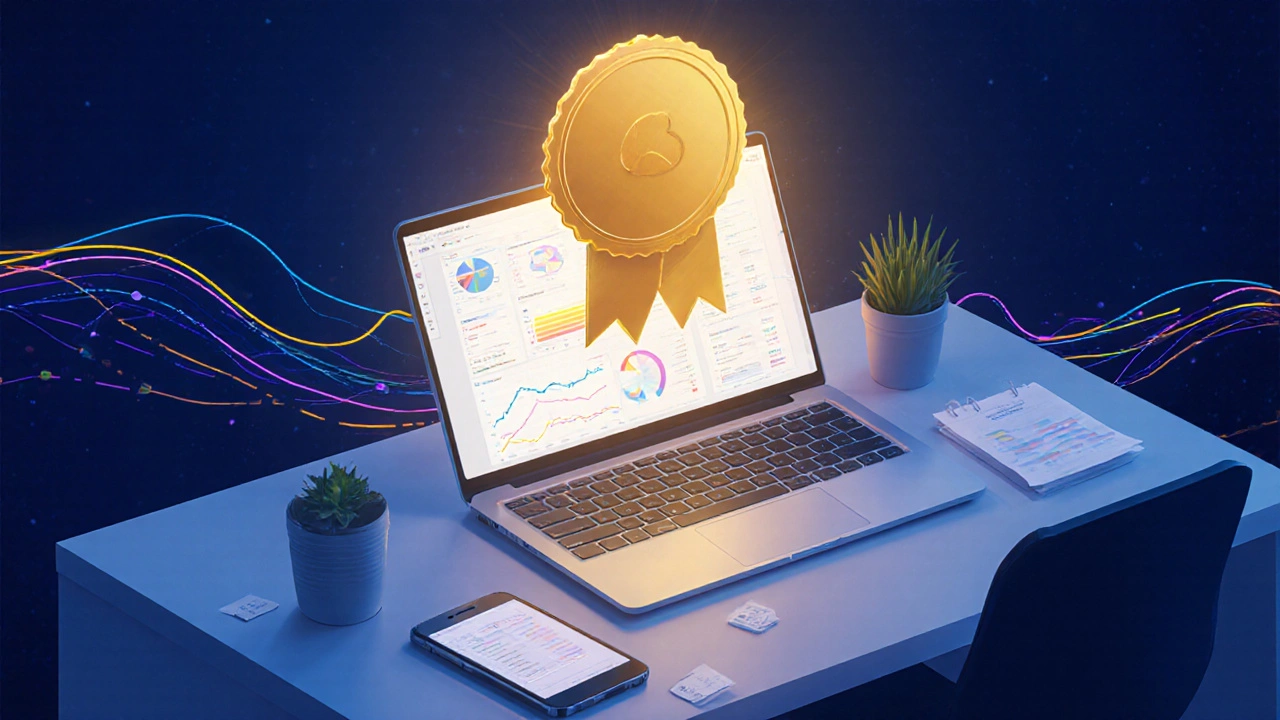eLearning Module Duration Calculator
Enter your content types and quantities to get recommended module duration based on best practices from the article.
Article reference: Keep modules between 20-30 minutes total, broken into 5-10 minute micro-segments for maximum engagement.
When someone asks for an eLearning example, they’re usually looking for a concrete illustration of how a digital course works from start to finish. Below you’ll find a walk‑through of a real‑world online class, the platforms that host it, the building blocks that make it tick, and quick tips for creating your own.
What is eLearning?
eLearning refers to the delivery of educational content via electronic devices, typically over the internet, allowing learners to study anytime, anywhere. It covers everything from short micro‑videos to full‑degree programs and relies on technology to mimic, augment, or replace traditional classroom experiences.
Why eLearning matters today
- Flexibility - learners can pause, rewind, or skip sections.
- Scalability - a single digital module can reach thousands without extra classroom space.
- Data‑driven insights - platforms track completion rates, quiz scores, and engagement patterns.
- Cost efficiency - no travel, printed materials, or physical facilities.
According to a 2024 study by the Online Learning Consortium, global enrollment in eLearning courses grew 27% year‑over‑year, proving that digital education isn’t a fad but a mainstream option.
Real‑world example: A complete eLearning course
Imagine a three‑week “Fundamentals of Data Visualization” course offered by a leading university. Here’s how it unfolds:
- Orientation video (5 min) - introduces the instructor, objectives, and platform navigation.
- Week 1: Theory & design principles - 2 hour reading, 10‑minute animation, and a short quiz (SCORM‑compliant).
- Week 2: Tool‑specific tutorials - hands‑on labs in Tableau and Power BI, each with a downloadable worksheet.
- Week 3: Capstone project - learners build a dashboard, submit via the platform’s assignment uploader, and receive automated feedback plus a peer review.
- Digital badge - upon passing the final assessment, the system awards a badge that can be shared on LinkedIn.
This flow demonstrates the core components of an eLearning course: orientation, content delivery, interaction, assessment, and credentialing.
Popular platforms that illustrate eLearning
Below is a quick comparison of three widely‑used platforms that host the type of course described above.
| Platform | Primary Focus | Pricing Model | Certificate Option | Typical Audience |
|---|---|---|---|---|
| Coursera | University‑grade courses & degrees | Subscription or per‑course fee | Verified certificates & micro‑degrees | Professionals seeking career up‑skill |
| Udemy | Skill‑specific workshops | One‑time purchase | Completion badge (no accreditation) | Individuals looking for quick learning |
| Khan Academy | K‑12 & foundational subjects | Free (donation‑supported) | Progress dashboards, no formal certificate | Students, parents, teachers |
Each platform supports the same basic eLearning building blocks-videos, quizzes, downloadable assets, and credentialing-while catering to different learner goals.
Key components that make an eLearning example effective
- Microlearning: bite‑size lessons keep attention high.
- SCORM compliance ensures that quizzes and progress data sync across LMSs.
- Interactive simulations give hands‑on practice without physical labs.
- Discussion forums foster community and peer learning.
- Digital badges provide shareable proof of achievement.

How to build your own eLearning module
- Pick a Learning Management System (LMS) (Moodle, Canvas, or a SaaS option).
- Define learning outcomes in clear, measurable terms.
- Storyboard the flow: intro → content chunks → knowledge checks → final project.
- Produce assets: record videos in 1080p, create slide decks, write scripts.
- Wrap quizzes in SCORM packages so progress is tracked.
- Publish, test with a pilot group, and gather analytics (completion rate, average score).
- Iterate: improve low‑scoring sections, add optional supplemental readings.
Following these steps turns a simple idea into a polished eLearning experience that behaves like the example above.
Common pitfalls and pro tips
Pitfall: Overloading learners with long videos.
Pro tip: Keep each video under 10 minutes and embed “pause‑and‑reflect” questions.
Pitfall: Ignoring mobile users.
Pro tip: Choose a responsive LMS and test playback on smartphones.
Pitfall: Using static PDFs only.
Pro tip: Blend PDFs with interactive elements like drag‑and‑drop exercises.
Frequently Asked Questions
What defines a good eLearning example?
A good example blends clear objectives, engaging multimedia, interactive assessments, and a way to verify learning-often via a digital badge or certificate.
Can I use free platforms for a professional‑grade eLearning course?
Yes. Platforms like Moodle and Canvas offer free open‑source versions that support SCORM, quizzes, and certificate issuance, making them suitable for corporate training.
How long should an eLearning module be?
Aim for 20‑30 minutes of total engagement, broken into 5‑10 minute micro‑segments to keep attention high.
Is SCORM still relevant in 2025?
Absolutely. SCORM remains the lingua‑franca for packaging learning objects, ensuring compatibility across most LMSs, even as xAPI gains traction.
What’s the difference between a virtual classroom and an eLearning course?
A virtual classroom focuses on live, synchronous interaction (video calls, chat), while an eLearning course is typically asynchronous, letting learners progress at their own pace.
Whether you’re a teacher, corporate trainer, or a lifelong learner, understanding a concrete eLearning example helps you pick the right platform, design compelling content, and measure success.
